When it comes to creating a comfortable and safe home for your pet, choosing the right bearded dragon substrate is one of the most important decisions you’ll make. The substrate you select not only affects the look of your dragon’s enclosure but also plays a critical role in their health and well-being. With so many options available, understanding which bearded dragon substrate provides the best balance of safety, hygiene, and comfort can be overwhelming. In this guide, we’ll explore the top substrates, their benefits, and how to choose the ideal flooring to keep your bearded dragon happy and healthy for years to come.
Why Choosing the Right Substrate Matters for Bearded Dragons
Selecting the proper substrate is vital to your bearded dragon’s health and happiness. It impacts hygiene, comfort, and the overall environment of their enclosure. Understanding the role of substrate helps you create a safer and more natural habitat.
The Role of Substrate in Bearded Dragon Health
Substrate affects your dragon’s hygiene by absorbing waste and moisture. A clean substrate reduces bacteria buildup, which helps prevent infections. Comfort is also important—soft substrates encourage natural behaviors and ease movement. Mobility depends on the substrate’s texture; rough or unstable surfaces can cause stress or injury.
Substrate and Digestive Safety: Avoiding Impaction Risks
Poor substrate choices can lead to digestive problems, especially impaction. Loose substrates like fine sand or small particles may be accidentally ingested during feeding. This can block the digestive tract, causing severe health issues. Choosing a safe substrate minimizes this risk and supports healthy digestion.
Behavioral and Environmental Effects of Substrate Choices
Substrate influences behaviors such as digging and basking. Dragons often dig to create comfortable spots or regulate their temperature. Some substrates retain heat better, aiding thermoregulation. An unsuitable substrate can limit these natural behaviors, affecting your pet’s well-being.
For a deeper look at basking behavior and heat regulation, check out our guide: Do Bearded Dragons Need a Basking Rock to Thrive?
How Substrate Affects Tank Humidity and Cleaning Routines
Different substrates impact humidity levels inside the tank. For example, natural substrates can hold moisture and increase humidity, which might not suit desert-dwelling dragons. Substrate type also affects odor control and cleaning frequency. Choosing an easy-to-clean substrate simplifies maintenance and keeps the environment fresh.
Best Bearded Dragon Substrate Options Compared
There are many substrates available, but some stand out for safety, cleanliness, and comfort. Knowing the pros and cons of each type helps you pick the best fit for your dragon’s needs.
Reptile Carpet and Solid Flooring: Safe and Easy to Clean
Reptile carpet is a popular choice because it is reusable and easy to clean. It prevents accidental ingestion since it is a solid surface. However, it can trap debris and requires frequent washing. Solid flooring like paper towels offers similar benefits and is inexpensive but less natural-looking.
Tiles and Slate: A Hygienic, Long-Lasting Alternative
Tiles and slate provide a durable, non-toxic surface that holds heat well. They are easy to clean and resist odors. These substrates mimic rocky environments found in the wild. The initial cost can be higher, but their longevity and low maintenance make them cost-effective in the long run.
Natural Substrates: Soil, Sand Mixes, and Bioactive Setups
Natural substrates offer a more authentic habitat experience. Soil and sand mixes can encourage digging and burrowing. Bioactive setups include live plants and beneficial microorganisms that help break down waste. However, these setups require careful management to avoid excess moisture and bacterial growth.
Substrates to Avoid and Why They’re Risky
Some substrates pose health risks and should be avoided. Calci-sand and walnut shells, for example, can cause impaction if ingested. Loose, dusty materials may irritate the respiratory system. Always research before selecting a substrate to ensure it is safe for your pet.
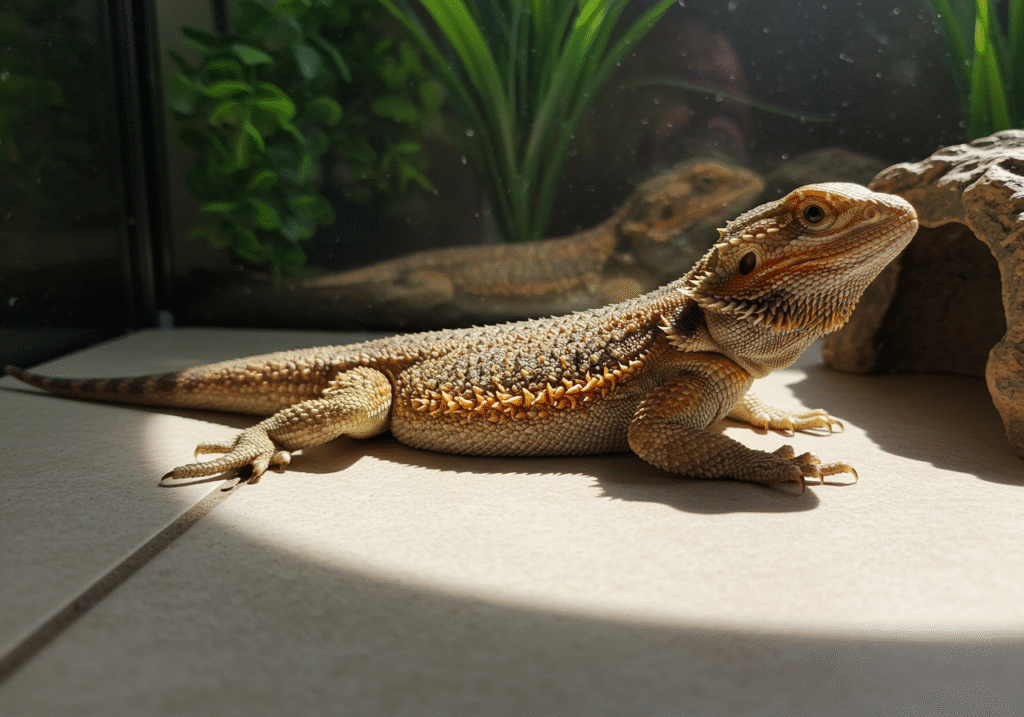
How to Choose the Ideal Substrate for Your Setup
Choosing the right substrate depends on your bearded dragon’s age, enclosure type, lifestyle, and budget. Considering these factors will guide you to the best option.
Substrate for Baby vs. Adult Bearded Dragons
Baby bearded dragons are more sensitive and prone to ingestion issues. Solid or paper-based substrates are safer for hatchlings. Adults can handle a wider range of substrates, including natural options, but safety should always come first.
Matching Substrate with Enclosure Type and Size
The enclosure material influences substrate choice. Glass tanks benefit from solid substrates that are easy to clean. Larger wooden vivariums may support bioactive setups. The size of the enclosure also affects how much substrate you need and the cleaning schedule.
For a full overview of heating, lighting, and layout, check out this detailed guide on creating the ideal bearded dragon setup from Swell Reptiles.
Lifestyle and Cleaning: Which Substrate Fits Your Routine?
Busy owners should consider substrates that require minimal maintenance. Reptile carpet and tiles are low-effort options. Natural substrates may need more frequent spot cleaning and monitoring. Choose a substrate that fits your time availability for optimal care.
Budget Considerations: Affordable and Effective Choices
Some substrates are inexpensive upfront but costly over time due to replacement and cleaning needs. Others require a higher initial investment but last longer. Balance cost with safety and ease of maintenance to find the best value.
Maintenance and Cleaning Tips for Bearded Dragon Substrates
Proper maintenance of your bearded dragon substrate ensures a healthy and comfortable environment. Regular cleaning prevents health issues and keeps your enclosure fresh. Understanding when and how to clean is key to your pet’s wellbeing.
How Often Should You Replace Bearded Dragon Substrate?
The replacement frequency depends on the substrate type. Solid surfaces like tiles or reptile carpet can last months with regular spot cleaning. Loose substrates, such as soil or sand mixes, require more frequent full replacements, usually every few weeks to prevent bacterial buildup. Monitor your enclosure daily to adjust cleaning schedules as needed.
Feeding fresh fruits like blueberries can also impact how often you need to clean your substrate. To learn more about safe fruit options for your pet, check out Can Bearded Dragons Eat Blueberries? Discover the Juicy Truth.
Spot Cleaning vs. Deep Cleaning Methods
Spot cleaning involves removing waste and soiled areas daily or every other day. Use paper towels or reptile-safe disinfectants to keep the enclosure tidy. Deep cleaning is a thorough process done monthly or as needed. It includes removing all substrate, washing the enclosure, and replacing the substrate with fresh material to eliminate odors and germs.
Tools and Supplies for Easy Substrate Maintenance
Having the right tools makes cleaning easier. Essential items include disposable gloves, reptile-safe disinfectants, scoops, paper towels, and waste bags. A handheld vacuum can also help remove loose debris. Keeping these supplies handy ensures routine maintenance is quick and effective.
Preventing Bacteria and Mold Buildup in Enclosures
Maintaining low humidity and good airflow reduces bacteria and mold growth. Avoid over-watering natural substrates and clean spills immediately. Regularly disinfect water and food dishes. Proper substrate care protects your bearded dragon from respiratory and skin infections.
Expert Answers: Common Substrate Questions from Owners
Many owners have questions about substrate choices and safety. Here are expert answers to some of the most frequent concerns, helping you make informed decisions.
Can Bearded Dragons Use Sand as Substrate?
Using sand is controversial because loose sand can cause impaction if ingested. However, calcium-based sands marketed specifically for reptiles may be safer but still carry risks. If you choose sand, monitor your dragon closely and consider mixing it with other substrates to reduce ingestion chances.
Is a Bioactive Substrate Setup Worth It?
Bioactive setups mimic natural environments using live plants and beneficial microorganisms. They improve enclosure cleanliness by breaking down waste naturally. While attractive and environmentally friendly, these setups require more knowledge, time, and maintenance to keep balanced and safe.
What’s the Best Substrate for Bearded Dragons with Impaction History?
For dragons prone to impaction, solid and non-loose substrates are safest. Options like reptile carpet, tiles, or paper towels reduce ingestion risks. Avoid any loose materials or fine particles. Consult your veterinarian for tailored recommendations based on your pet’s health.
Should You Mix Different Substrates Together?
Mixing substrates can provide varied textures and aesthetics. However, it may cause issues like uneven moisture retention or accidental ingestion if loose particles are involved. Mixing is best done carefully, using safe combinations and monitoring your dragon’s behavior to ensure comfort and safety.
Conclusion
Choosing the right substrate is essential for maintaining your bearded dragon’s health and happiness. The substrate you select influences hygiene, safety, and your pet’s natural behaviors. Whether you prefer easy-to-clean solid surfaces or natural substrates, always prioritize your dragon’s well-being and comfort.
Regular maintenance and informed substrate choices reduce health risks like impaction and respiratory issues. By understanding the pros and cons of different options, you can create an ideal habitat that supports your bearded dragon’s long-term vitality. Remember, a well-chosen substrate is more than just flooring—it’s the foundation of a thriving environment for your beloved pet.

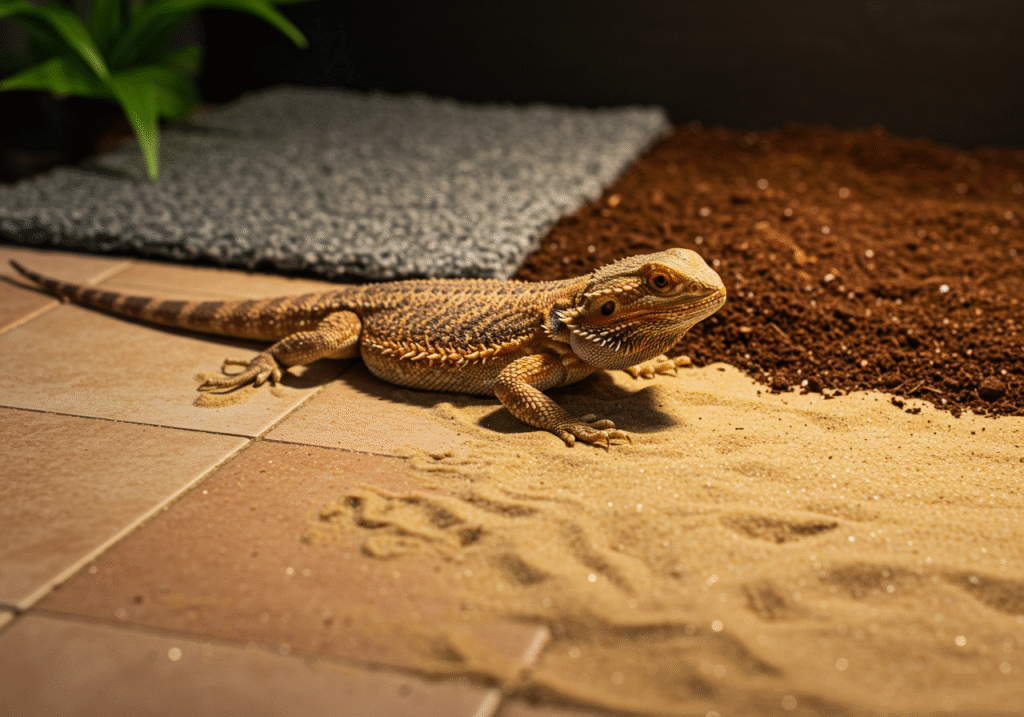
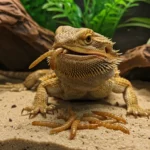
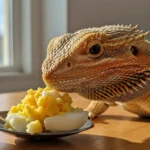
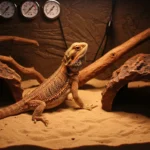
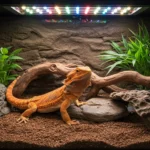
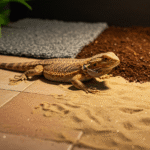
2 thoughts on “Best Bearded Dragon Substrate for a Happy and Healthy Pet”